Working from home sounds dreamy… until your desk disappears under cables, coffee cups, and mysterious papers you swear you’ll “file later.”
A cluttered space sneaks up on you. It starts with one sticky note. Then one random receipt. Next thing you know, your keyboard’s buried, and you’re wondering if productivity just quietly moved out.
I’ve been there — and I’m betting you have too.
Here’s the thing: organization doesn’t mean perfection. You don’t need an all-white Pinterest setup with matching gold scissors (unless that’s your thing). The goal is simply a workspace that works.
You should be able to sit down, breathe, and not spend the first 20 minutes hunting for your pen.
So here are 12 realistic home office organization ideas that actually make sense for real people — flexible, doable, and oddly satisfying once you get the hang of them.
1. Start With the “Clear Zone” Rule
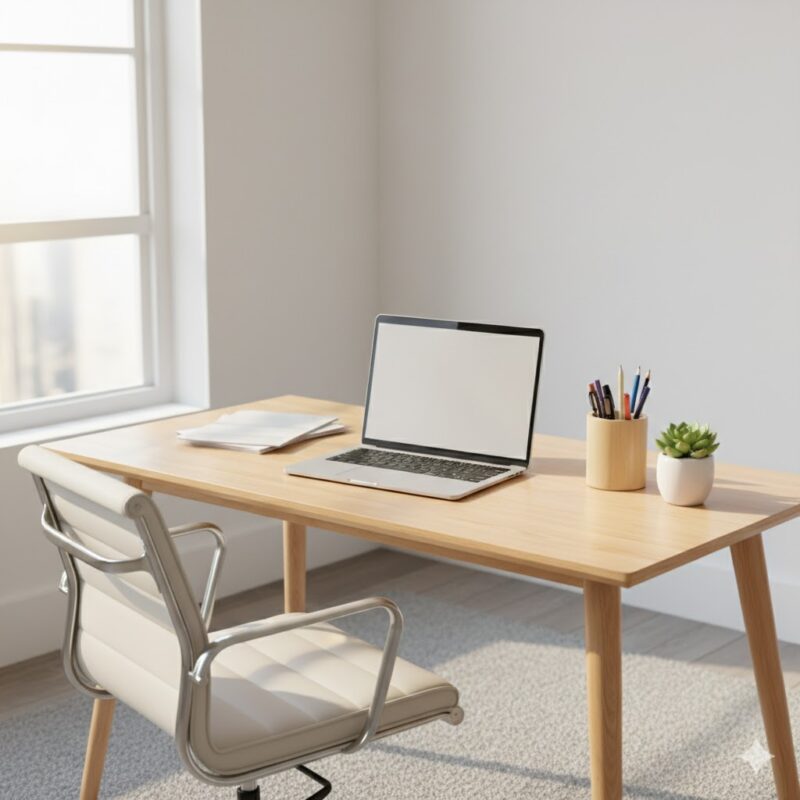
Let’s start simple. Pick one area — just one — that stays clear no matter what. Maybe it’s your desk surface or your main work zone. That’s your clear zone.
Even if chaos slowly creeps around you (and it will), having that one clean surface instantly resets your brain. I swear it changes how you feel walking into the room.
I first heard this idea from a designer friend who calls it “visual breathing space.” When you see too much stuff, your brain doesn’t know where to land.
So even if you can’t organize everything, protecting that one clear area gives the illusion of calm — and that illusion is powerful.
Bonus tip: At the end of each day, clear that one space again. Even just pushing everything to the side and wiping it down can feel like reclaiming order.
2. Invest in Storage That Matches How You Work
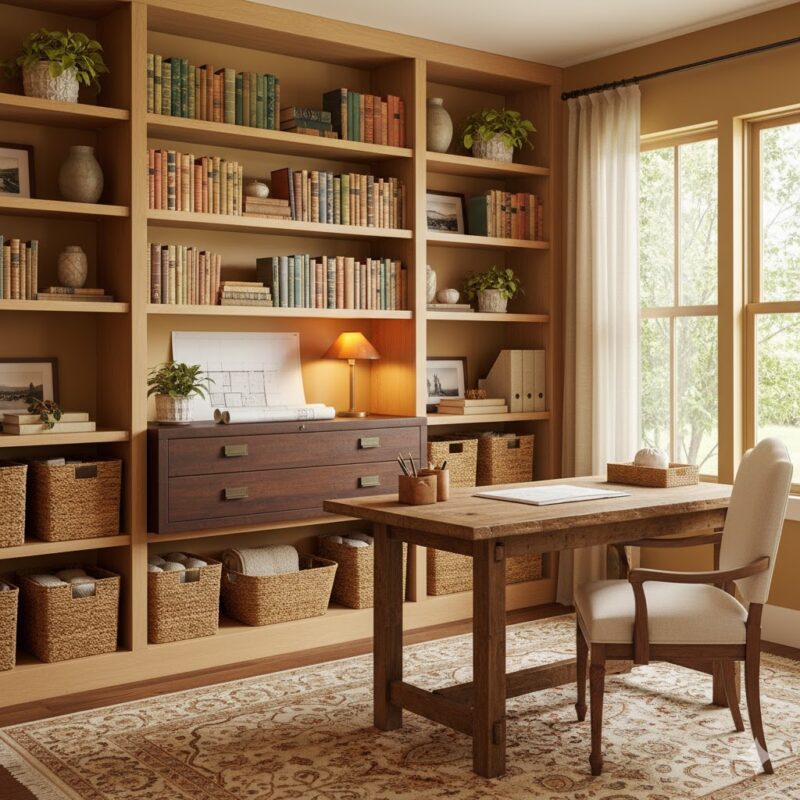
Organization fails when storage doesn’t match your habits. For instance, if you’re a “piler” — someone who stacks papers instead of filing them — stop fighting it. Get vertical trays or open bins instead of drawers you’ll never open.
If you love hiding clutter, go with opaque boxes or cabinets. If you like everything visible (no shame), try open shelving with clear containers.
There’s no one-size-fits-all. I know people who swear by color-coded folders, and others who use one chaotic box but still find everything instantly.
The trick is designing storage that complements your chaos style, not scolds it.
Ask yourself:
- Do I reach for things often or rarely?
- Do I need to see stuff to remember it exists?
- Am I more likely to put something away if it’s easy or hidden?
Your answers will tell you exactly what kind of storage you’ll actually maintain.
3. Make Use of Vertical Space (Walls = Gold)
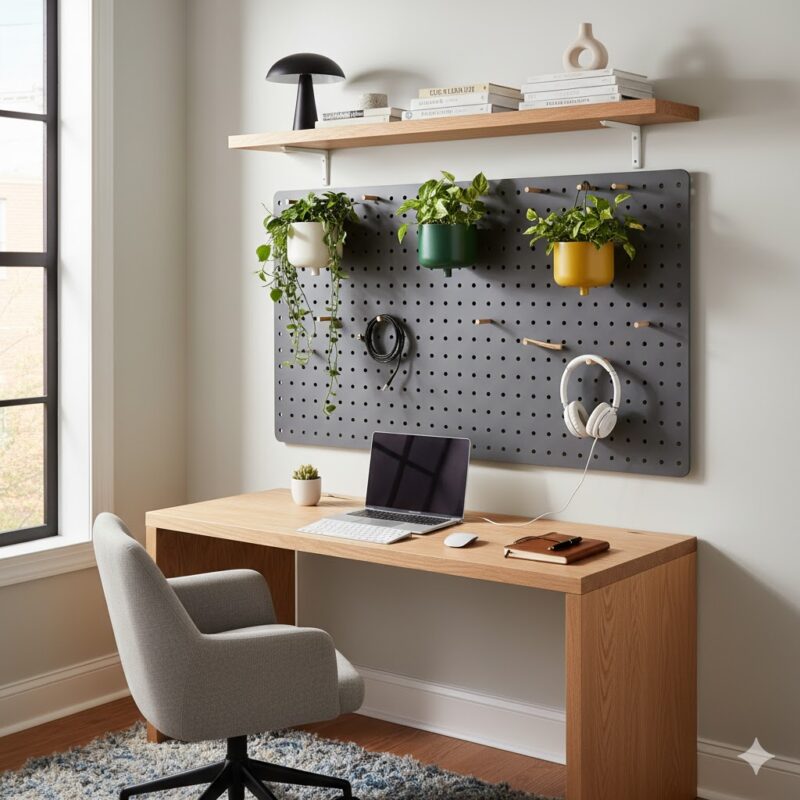
The biggest organizing mistake most people make is ignoring walls. They’re free real estate.
Wall-mounted shelves, pegboards, or hanging file racks can double your usable space without eating into your floor. Pegboards especially are magic — they let you rearrange hooks, baskets, and small shelves depending on what you’re working on that week.
I used to keep my stationery in drawers, but now it lives on the wall in small containers. I can grab scissors, cables, or sticky notes in two seconds — no rummaging required.
Plus, vertical storage pulls clutter upward, making the room look cleaner even if your desk isn’t flawless.
Pro tip: Keep the stuff you use daily within arm’s reach. Everything else? Up on the wall or tucked away.
4. Use Drawer Dividers — Seriously
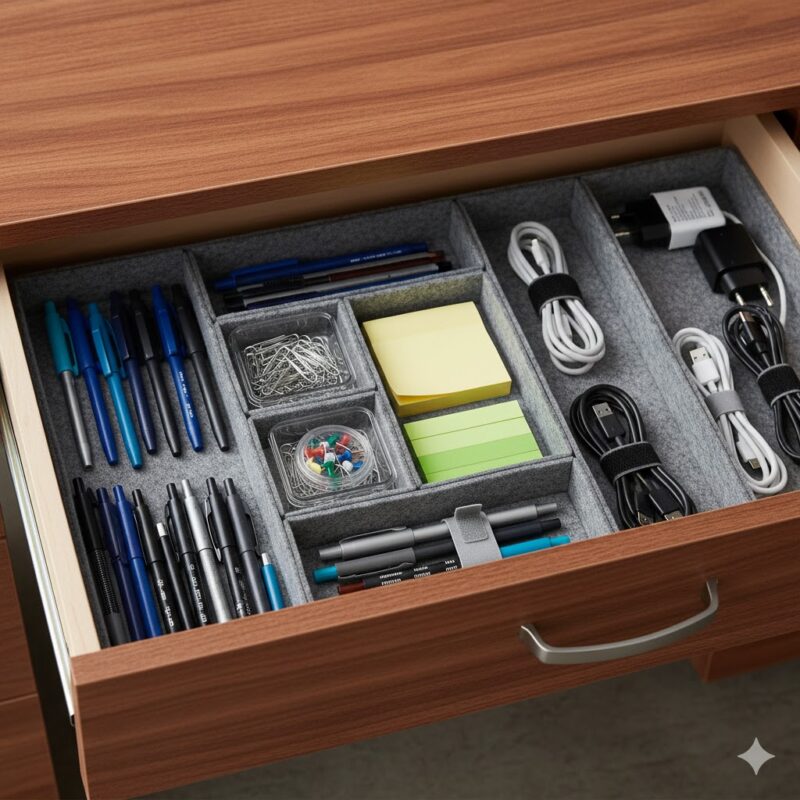
Drawer dividers are like the secret handshake of organized people. They’re simple, cheap, and borderline life-changing.
Without them, drawers turn into black holes where pens and USB drives vanish forever. With them, suddenly every object has a tiny home. It’s weirdly satisfying.
You can buy adjustable bamboo ones or just DIY using small boxes from packaging — anything that separates sections works.
And don’t go overboard — one messy “junk” drawer is fine. But when every drawer becomes a junk drawer, you’ve officially lost control.
5. Hide the Cables (Because They’re Ugly)
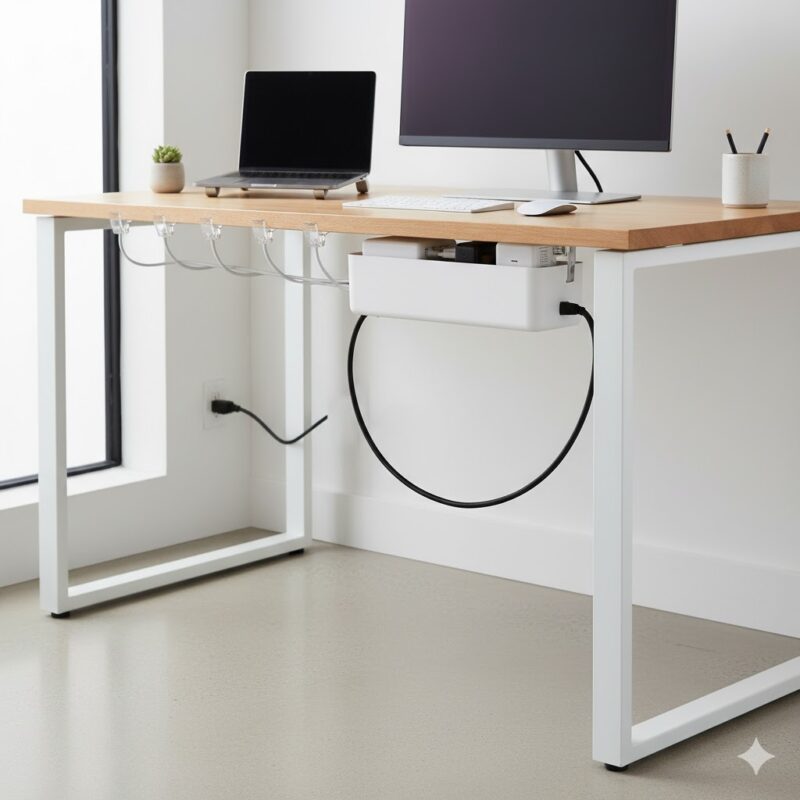
I’ve yet to meet a single person who enjoys staring at tangled cables. They make even a clean setup look chaotic.
Luckily, taming them isn’t that hard:
- Use cord clips along the desk edge.
- Run wires through a cable management box or sleeve.
- Mount a power strip under your desk to keep plugs out of sight.
If you’re renting and can’t drill, Velcro strips or adhesive hooks do wonders.
When you finally hide those wires, it’s like your office just took a deep breath. Visually lighter, mentally calmer.
6. Label Everything (Even the Stuff You Think You’ll Remember)
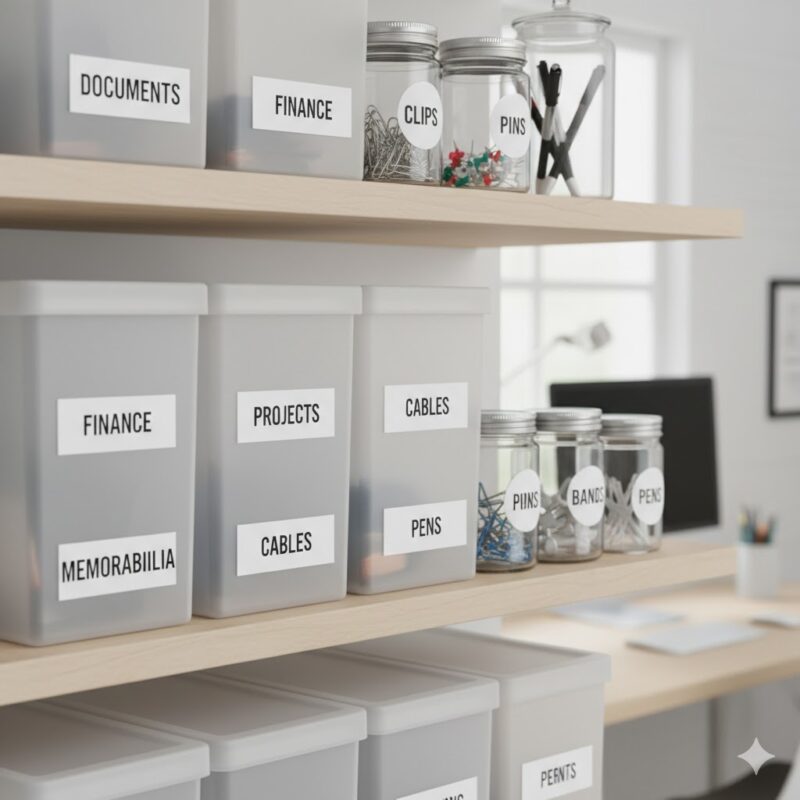
You will forget what’s in that mystery box. Everyone does.
Labels save future-you from digging through every drawer yelling “WHERE IS THE STAPLER.”
They also help other people in your house not mess up your system (a miracle in itself).
Keep it simple — handwrite or print small, clean labels. It’s not about making it “aesthetic.” It’s about not losing sanity when you need one small cable you haven’t seen since last year.
Also, don’t label everything like a teacher’s supply closet. Over-labeling can feel overbearing. Just tag the containers that aren’t see-through or things you use less often.
7. Keep Paperwork From Taking Over
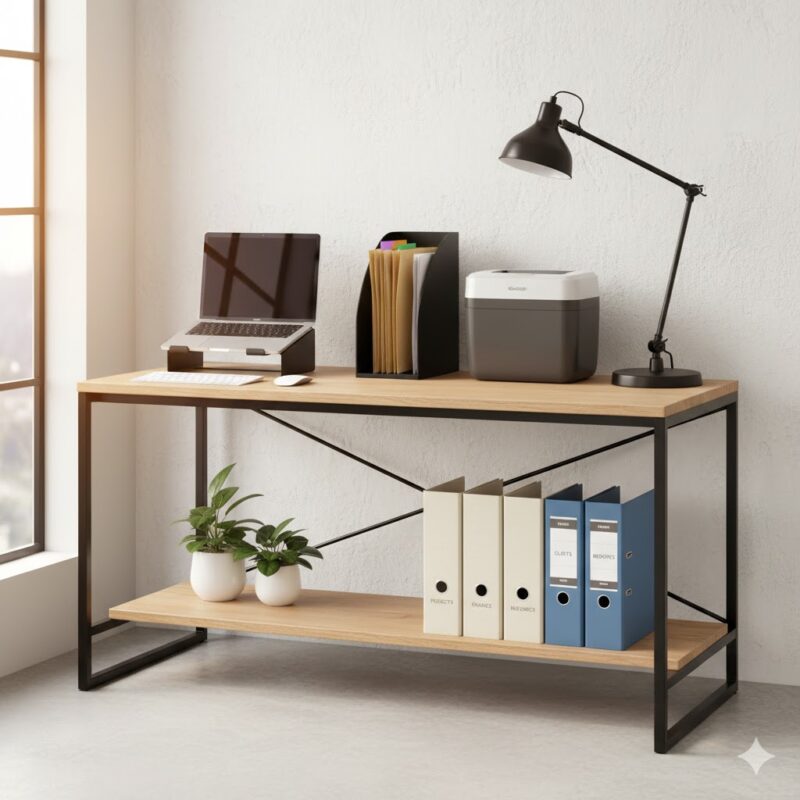
Paper piles breed like rabbits. And let’s be honest — most of it you don’t need.
I keep three simple paper categories:
- Active: Current bills, projects, or papers you’re using this week.
- Archive: Things you must keep long-term (contracts, warranties, tax stuff).
- Recycle: Everything else.
Scan important papers you rarely need into PDFs. A small shredder is worth it — it’s oddly therapeutic, too.
If you deal with a lot of documents, vertical file holders work better than flat stacks. They keep everything visible but contained.
And seriously, stop printing stuff “just in case.” That’s how it starts.
8. Create “Zones” Instead of One Big Mess
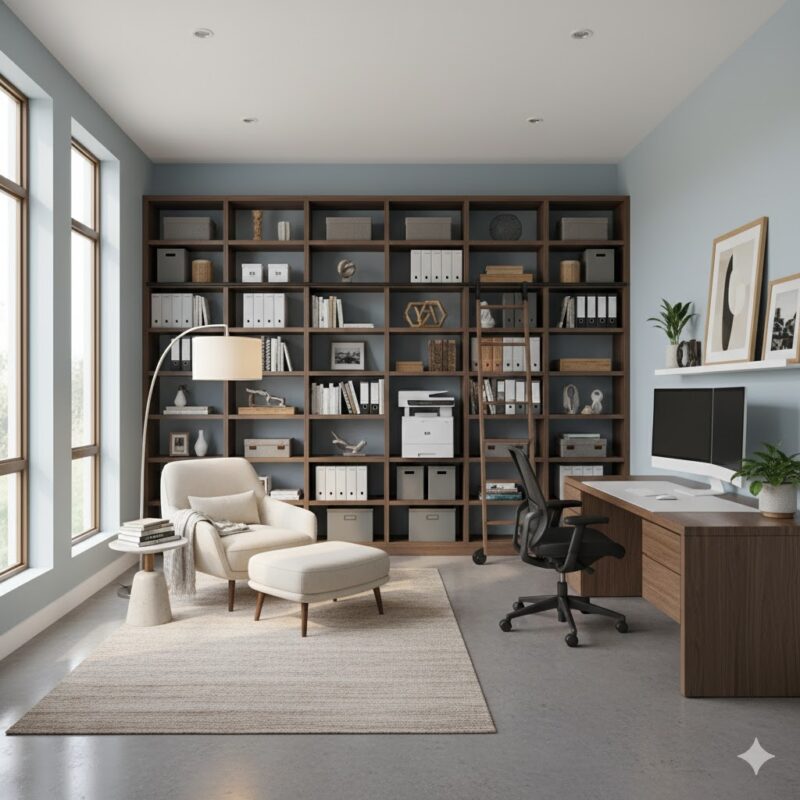
Dividing your office into zones helps more than you’d think. Each zone has one purpose — work, storage, relaxation, etc.
It doesn’t matter how big your space is. Even in a corner setup, you can mentally separate:
- Desk zone – for focused work
- Storage zone – for supplies
- Creative zone – maybe a whiteboard or sketch pad
- Chill zone – a comfy chair to think or rest your eyes
This way, clutter stays contained to its area. It’s like giving chaos a designated sandbox.
And psychologically, moving between zones helps your brain switch gears — something remote workers often struggle with.
9. Add Rolling Carts or Mobile Storage
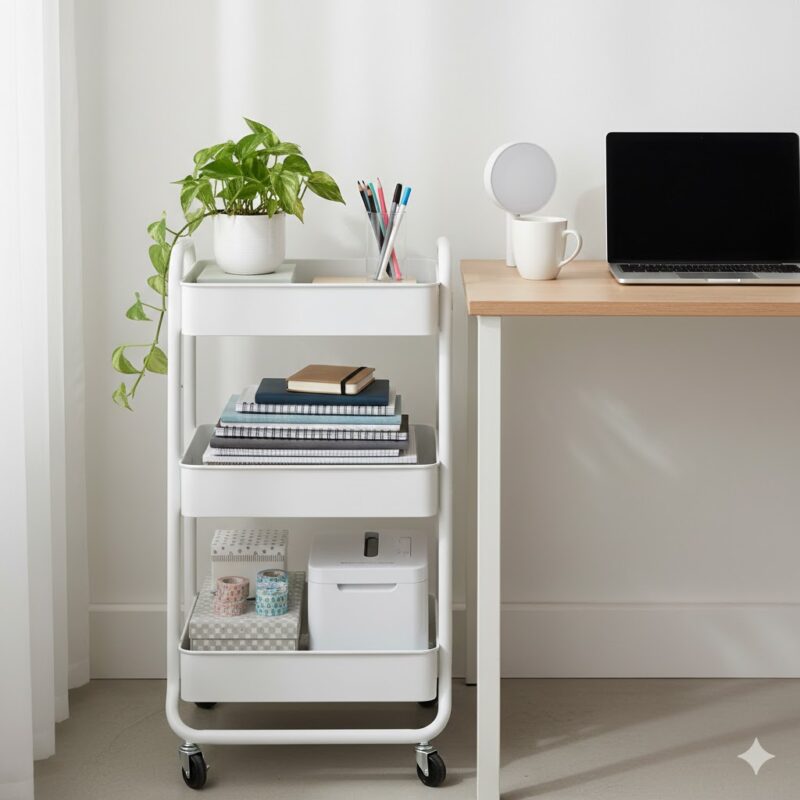
I love rolling carts. They’re like assistants on wheels.
You can tuck them under your desk, move them to another room, or use them for specific tasks — like a “project cart” or “art cart.”
They’re especially good for small spaces because they add flexibility. Instead of filling your desk with stuff, keep supplies mobile.
And here’s a trick: when your cart starts overflowing, it’s a sign you’ve hit your limit. If it doesn’t fit, you probably don’t need it.
10. Don’t Forget the Digital Clutter
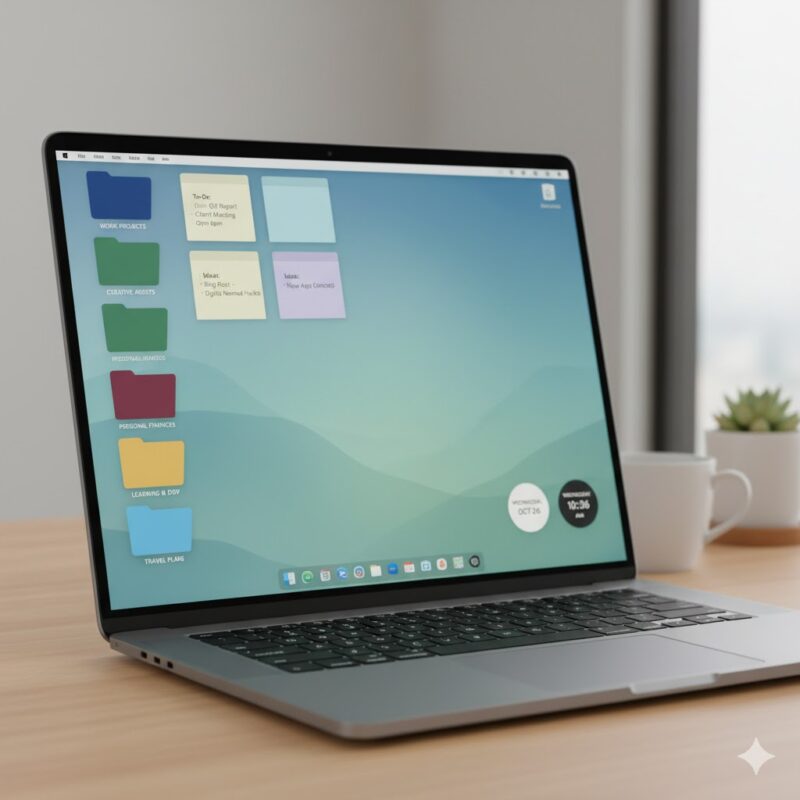
Your physical space isn’t the only one that needs organizing. Digital chaos counts, too.
You know those screenshots and random downloads you swear you’ll rename later? Yeah. They’re digital dust bunnies.
Once a week, spend 15 minutes cleaning your desktop, deleting old files, and organizing folders.
Use consistent naming — even something simple like Invoices_2025_Jan.
If your computer feels slow or overwhelming, it’s probably not the RAM. It’s the clutter.
Bonus tip: Set your desktop background to something simple — even blank white. Visual calm equals mental calm.
11. Make It Personal (Within Reason)
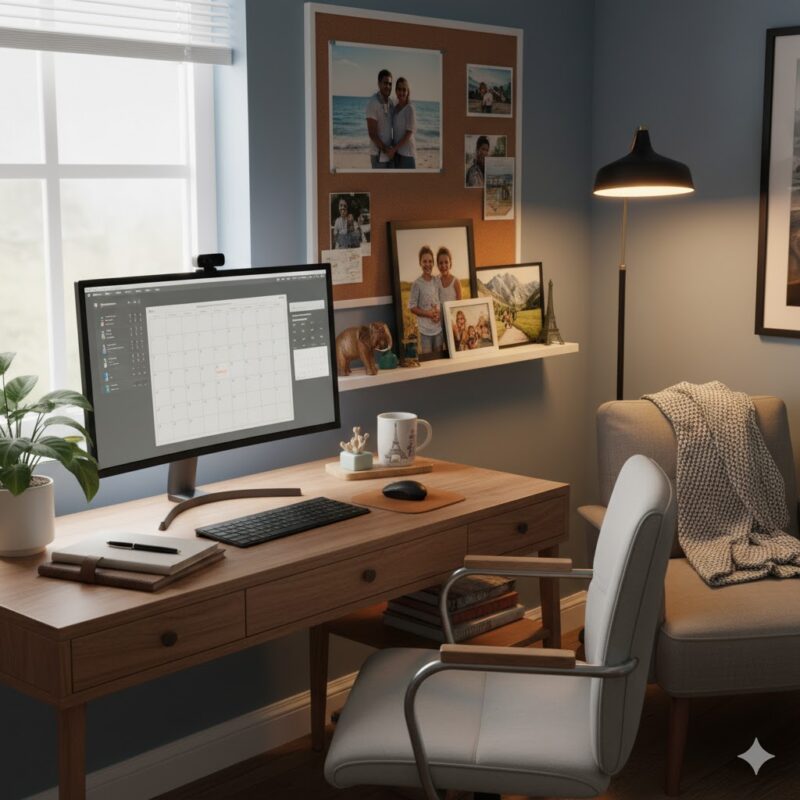
Here’s the thing: sterile workspaces might look “clean,” but they don’t feel inspiring.
Add a few things that make you happy — a framed photo, artwork, or that weird little trinket you got on a trip. Personal touches make the space yours.
But… don’t turn your desk into a souvenir shelf. Keep it to two or three personal items max. The rest should serve a function.
It’s that balance between inspiration and distraction — a tricky one, but worth finding.
12. Build “End-of-Day Habits” That Reset the Room
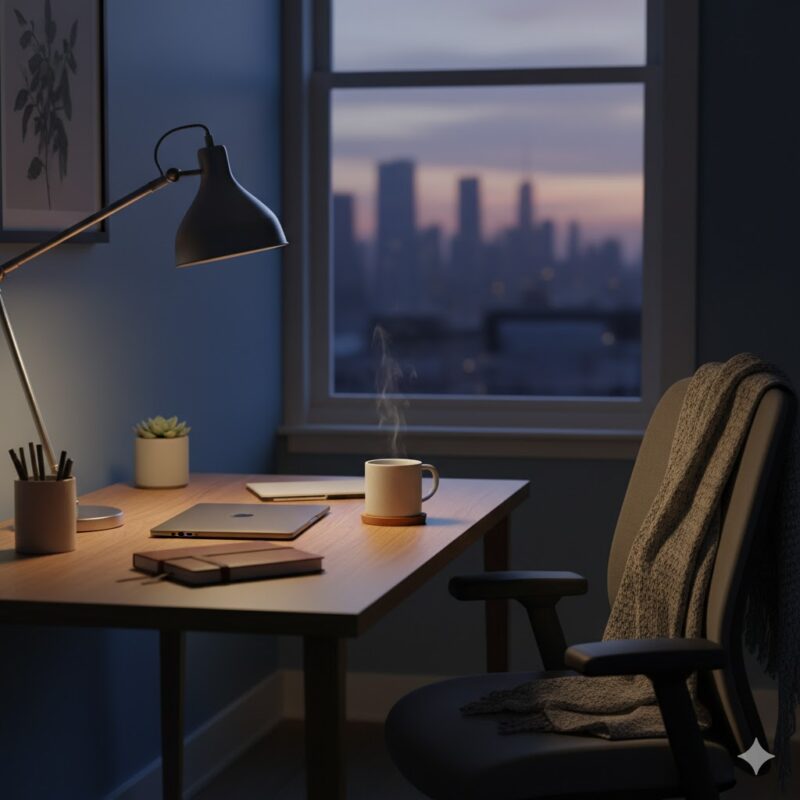
Organization isn’t just about where things go — it’s about maintaining it.
That’s why daily rituals matter. Take five minutes before logging off to reset the space:
- Put pens back in holders.
- Close your laptop.
- Clear your “clear zone.”
- Maybe light a candle for the scent of closure (yes, that’s a thing).
It sounds tiny, but this habit keeps mess from snowballing. The next morning, you walk into a fresh start instead of yesterday’s chaos.
And honestly, that small act can shift your whole attitude toward work.
Bonus: Organizing Isn’t a Personality Trait
If your desk gets messy sometimes — so what? It doesn’t mean you’re lazy or unproductive.
Life happens. Deadlines happen. A perfectly organized desk doesn’t make you a better worker; it just makes your brain less noisy.
Some of the most creative people thrive in “organized mess.” The key is knowing when mess stops being motivating and starts being stressful.
When you find your version of organized — whether that’s a hyper-clean aesthetic or slightly chaotic comfort — stick with it.
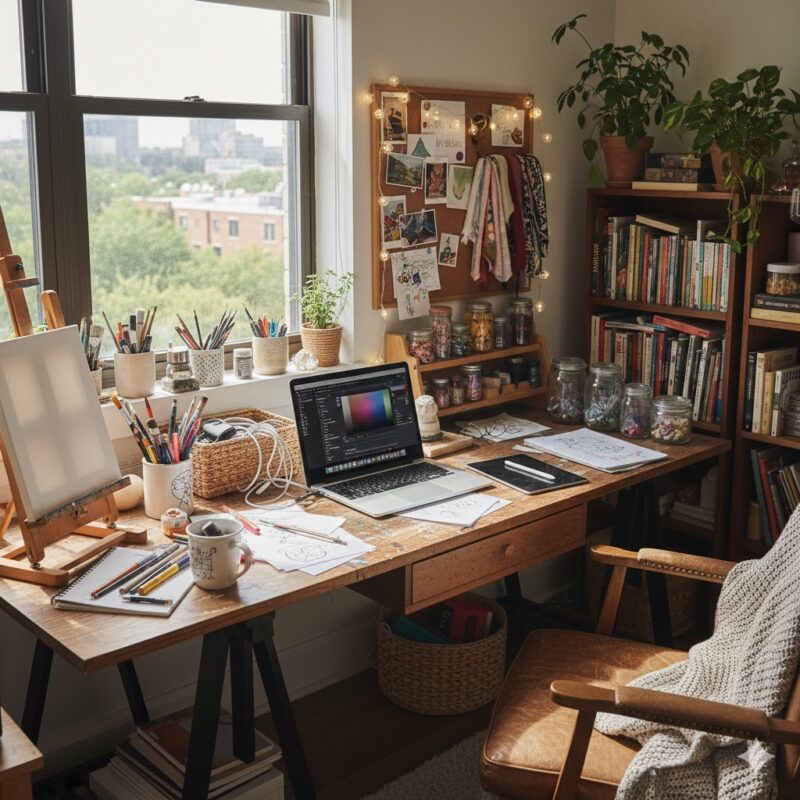
Wrapping It Up
If your office feels out of control right now, start small. One drawer. One shelf. One “clear zone.”
You’ll be surprised how quickly order spreads once one corner looks the way you want.
And remember, a well-organized home office isn’t about control — it’s about comfort. It’s about creating a space that supports you, not one that silently judges you for existing.
Keep what helps. Let go of what doesn’t.
And maybe, just maybe, next time you sit down to work, you’ll actually want to stay there.